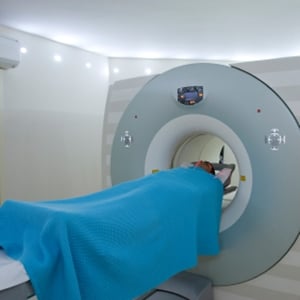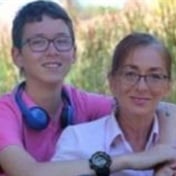
Reducing the number of unnecessary and high-dose CT scans given to children could cut their lifetime risk of associated cancers by as much as 62%, according to a new study.
CT (computed tomography), which uses X-rays to provide doctors with cross-sectional images of patients' bodies, is frequently used in young children who have suffered injuries.
Researchers concluded that the 4 million CT scans of the most commonly imaged organs conducted in children in the United States each year could lead to nearly 4 900 cancers in the future.
They also calculated that reducing the highest 25% of radiation doses could prevent nearly 2 100 (43%) of these future cancers, and that eliminating unnecessary CT scans could prevent about 3 000 (62%) of these future cancers.
"There are potential harms from CT, meaning that there is a cancer risk - albeit very small in individual children - so it's important to reduce this risk in two ways," study lead author Diana Miglioretti, a professor of biostatistics in the department of public health sciences at the UC Davis Health System, in California, said in a health system news release.
"The first is to only do a CT when it's medically necessary, and use alternative imaging when possible," she said. "The second is to dose CT appropriately for children."
What the study found
The researchers examined data on the use of CT in children at a number of health care systems in the United States between 1996 and 2010. Among children under 5 years old, CT use nearly doubled from 11 per 1 000 in 1996 to 20 per 1 000 between 2005 and 2007, and then decreased to about 16 per 1 000 in 2010.
Among children aged 5 to 14, CT use nearly tripled, from 10.5 per 1 000 in 1996 to a peak of 27 per 1 000 in 2005, before falling to about 24 per 1 000 in 2010.
Researchers examined 744 random CTs of the head, abdomen/pelvis, chest and spine conducted on children between 2001 and 2011 at five of the health systems to calculate radiation exposure levels and estimated cancer risk. These areas of the body account for more than 95% of all CT scans, the researchers said.
Head CT - the most commonly performed CT in children - poses the highest risk of radiation-induced leukaemia and brain cancers, according to the study. Meanwhile, CTs of the abdomen and pelvis - which had the most dramatic increase in use, especially among older children - pose the highest risk of radiation-induced solid cancer. Leukaemia and breast, thyroid and lung cancers account for 68% of estimated future cancers in girls who have had CTs, while leukaemia and brain, lung and colon cancers account for 51% of future cancers in boys who have had CTs.
More information
The American College of Radiology/Radiological Society of North America has
more about CT scans
and children.




 Publications
Publications
 Partners
Partners











